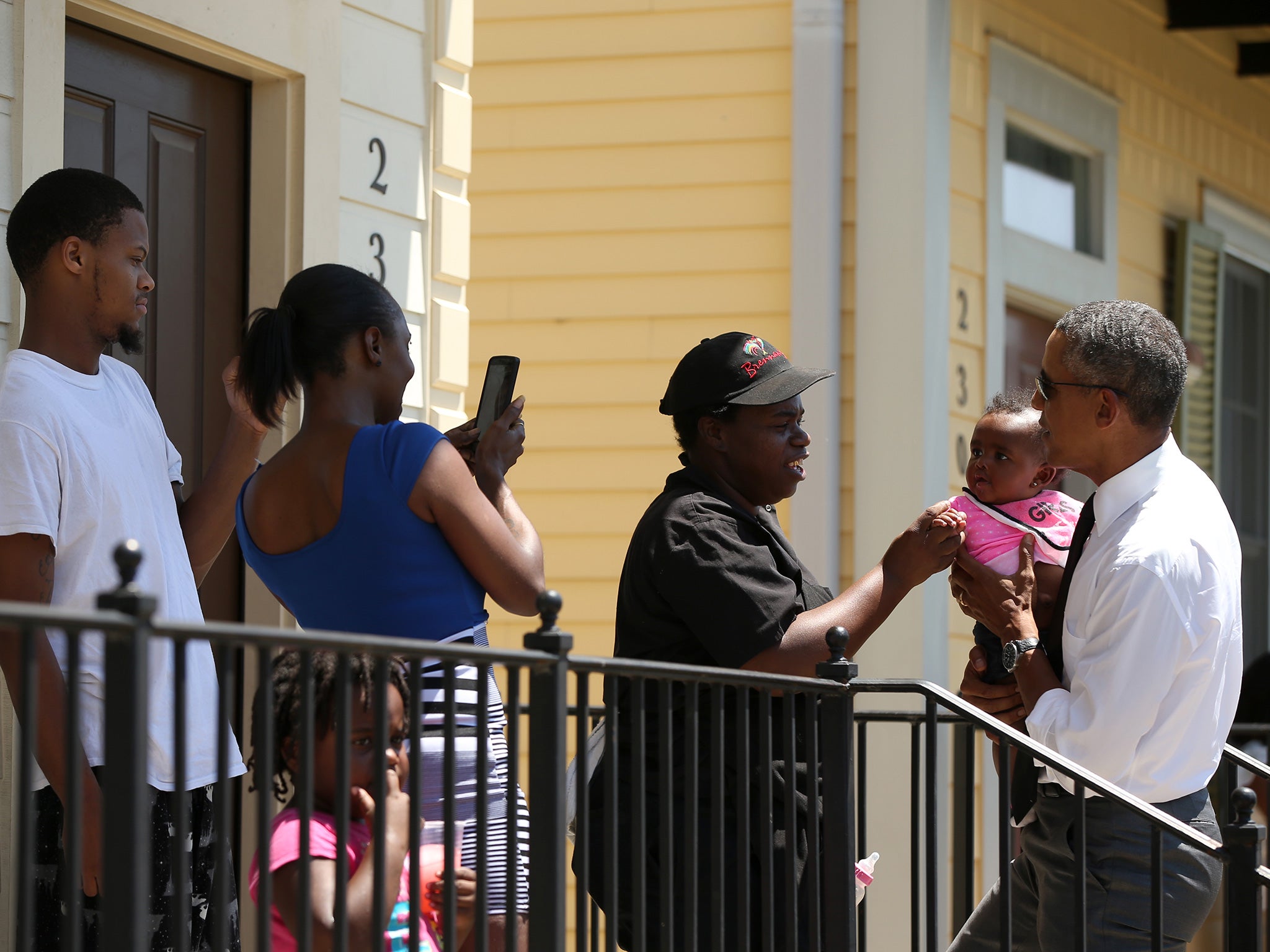Barack Obama in New Orleans: President praises city's 'extraordinary resilience' 10 years after Hurricane Katrina
He received a warm welcome from locals as he went door to door, meeting residents

Your support helps us to tell the story
From reproductive rights to climate change to Big Tech, The Independent is on the ground when the story is developing. Whether it's investigating the financials of Elon Musk's pro-Trump PAC or producing our latest documentary, 'The A Word', which shines a light on the American women fighting for reproductive rights, we know how important it is to parse out the facts from the messaging.
At such a critical moment in US history, we need reporters on the ground. Your donation allows us to keep sending journalists to speak to both sides of the story.
The Independent is trusted by Americans across the entire political spectrum. And unlike many other quality news outlets, we choose not to lock Americans out of our reporting and analysis with paywalls. We believe quality journalism should be available to everyone, paid for by those who can afford it.
Your support makes all the difference.President Barack Obama has paid tribute to the "extraordinary resilience" of New Orleans and its residents as he walked the streets of the Louisiana city, a decade after it was devastated by Hurricane Katrina.
Visiting New Orleans for the ninth time as President, Mr Obama went first to Treme, the historic black neighbourhood deluged during Katrina and later memorialised in the HBO drama Treme. He received a warm welcome from locals as he went door to door, meeting residents.
Speaking later at a community centre in the city’s Lower Ninth Ward, Mr Obama said: "Not long ago, our gathering here in the Lower Ninth might have seemed unlikely. But today, this new community centre stands as a symbol of the extraordinary resilience of this city and its people, of the entire Gulf Coast, indeed, of the United States of America."
Katrina made landfall in Louisiana on 29 August, 2005. The storm surge breached New Orleans’s outdated levee system, engendering a flood that engulfed 80 per cent of the city. Most of the 2,000 people killed in the region were in New Orleans, while a further 1 million were displaced.
The horrifying imagery from the aftermath – of residents huddled in the overcrowded Superdome, or of bodies rotting in the streets – underlined the inadequacy of the Government response, and highlighted the deep racial and class divides that still characterised the city and the US as a whole.
The costliest natural disaster in US history, Katrina caused an estimated $150bn worth of damage, the effects of which are still clearly visible today. The venue at which Mr Obama spoke is close to both newly renovated homes, and to overgrown plots where the houses have never been rebuilt.
Citing Louisiana’s new, $14bn levee system, Mr Obama said, "the whole federal government has gotten smarter at preventing and recovering from disasters" since Katrina.
In his speech, Mr Obama acknowledged that while New Orleans' population and economy have rebounded, inequality and crime are still rife. It was important to remember the terrible events of 2005, he said, "not in order to dwell in the past, but in order to keep moving forward. Because this is a city that slowly, unmistakably, together, is moving forward."
Join our commenting forum
Join thought-provoking conversations, follow other Independent readers and see their replies
Comments